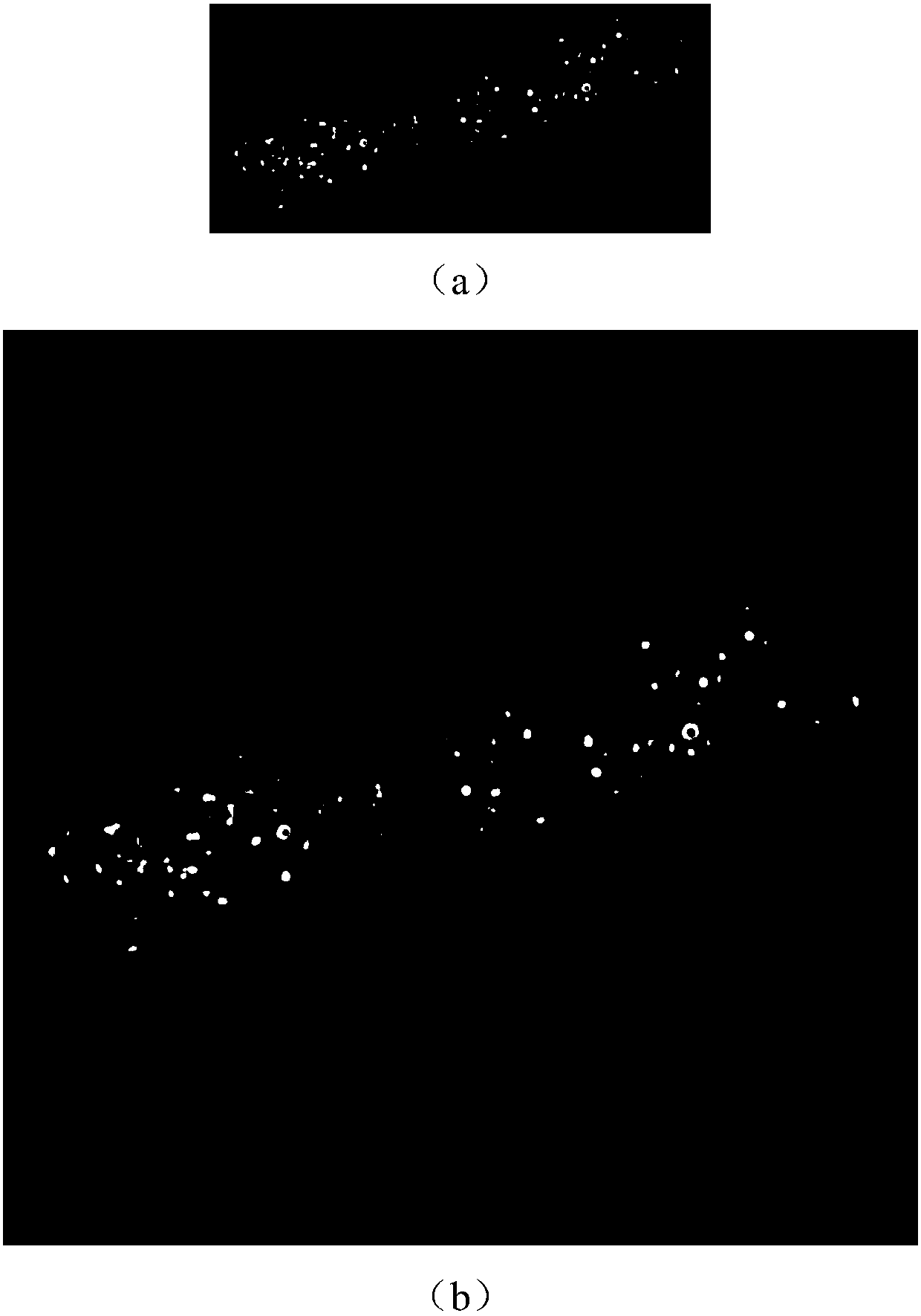Model construction method for cell image classification
A construction method and sub-classification technology, applied in the field of deep learning application research, to achieve high classification accuracy, improve classification accuracy, scale and cell types.
- Summary
- Abstract
- Description
- Claims
- Application Information
AI Technical Summary
Problems solved by technology
Method used
Image
Examples
Embodiment 1
[0043] Step 1. Image preprocessing
[0044] (1) Divide multiple images in the cell image set A (52000 pieces) into two groups, in which the images with width w and height h satisfying formula (1) form the first group of image sets (28000 pieces), width w and height h The images whose height h satisfies formula (2) form the second set of images (10000):
[0045]
[0046]
[0047] (2) Classify multiple images in each group of image sets according to the biological characteristics of the cells, and obtain 14 rough classifications in total, carry out subdivisions to each coarse classification, and obtain subdivisions of each coarse classification, a total of 26 subdivisions; The bases for subdivision include cell shape, cell color contrast, and degree of aggregation. For example, for the coarse classification 0-erythrocyte, its subdivision is divided into: normal erythrocytes, nettle-type erythrocytes and wrinkled erythrocytes. The specific classification results are shown ...
Embodiment 2
[0060] Utilize the recognition model file of the third group of image collections of embodiment 1 and the recognition model file of the fourth group of image collections to the image to be recognized (such as through step one (1), (3) processing of the present invention image 3 shown) for identification, the specific identification method can use the CLASSIFICATION sample project in the CAFFE framework, the identification result image 3 Cells shown are non-squamous epithelial cells.
PUM
 Login to View More
Login to View More Abstract
Description
Claims
Application Information
 Login to View More
Login to View More - R&D
- Intellectual Property
- Life Sciences
- Materials
- Tech Scout
- Unparalleled Data Quality
- Higher Quality Content
- 60% Fewer Hallucinations
Browse by: Latest US Patents, China's latest patents, Technical Efficacy Thesaurus, Application Domain, Technology Topic, Popular Technical Reports.
© 2025 PatSnap. All rights reserved.Legal|Privacy policy|Modern Slavery Act Transparency Statement|Sitemap|About US| Contact US: help@patsnap.com



